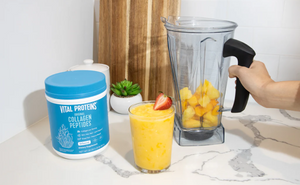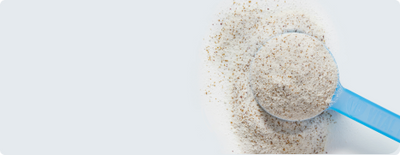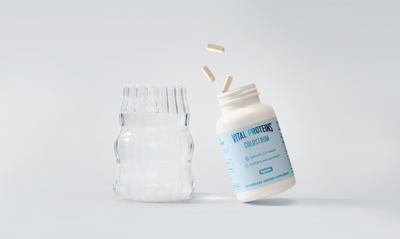It's the summer of wellness and we're all ready to refresh our daily routines. Our new Lively series will highlight all things hydration to help you live a fuller, more vibrant life with every sip and movement.

Looking to make a splash when it comes to your workout routine? Enter: swimming. It's a full-body workout that helps build endurance and is low impact.
"This battle for supremacy between your muscles and the water is what gives swimming its powers as an all-body workout," explains Chris Allsobrook, a personal trainer at OriGym.
You don't have to be an Olympic swimmer to get results. Since it's low impact on the joints, it's ideal for different ages and fitness levels. Ready to dive in? Here, the fitness experts answer questions on a swimming workout, including whether you can build strength and how many times you should be hitting the pool each week.

Can you get ripped from swimming?
Absolutely – although, it does depend on the level of "ripped" you're trying to achieve. If it's a long and lean physique with broad shoulders and a trim waist (think: Olympic swimmer Michael Phelps) then swimming can help, says Christine Danielson, Doctor of Physical Therapy and Board-Certified Orthopedic Certified Specialist.
But if it's a bodybuilder level of ripped you're after (think: Dwayne Johnson), you'll be better off seeking results in the gym. That's not to say that swimming doesn’t pack on muscle, though.
"Swimming is a full-body activity that incorporates both muscle strength, endurance, and cardiovascular fitness," explains Sergio Pedemonte, a Certified Personal Trainer and CEO of Your House Fitness.
How long should I swim for a good workout?
You'll want to tread lightly with the duration of your swimming workouts. That's because how long you swim to get a good workout varies, depending on your fitness level. Additional factors include the time you have available and your access to a swimming pool, adds Allsobrook.
Beginners should aim for a 30-minute swim, according to Pedemonte. Although it may not seem like a long time, it’s a great way to dip your toe into swimming workouts.
Tip: keep your swim structured. "If the swim is structured and planned, this time spent in the water will be efficient and effective and cause a great physical stimulus for growth," says Pedemonte.
Advanced swimmers have the swimming capacity and endurance to double that time. They are also advised to go a little bit off the deep end — aka get creative with their workouts.
As Pedemonte says, "advanced swimmers are advised to incorporate both continuous swimming for endurance training for things like triathlons, power training for time trials/muscle development and technique-focused days to improve the swimming economy." So, don't be afraid to mix it up!
Since it's important to eat something light before a swim, pack a Vital Performance™ Protein Bar in your swim bag. The 20g of tasty protein will leave you satisfied. And, try adding Hydration** + Collagen to the water you're bringing poolside to stay hydrated all workout long.
Can you lose weight by swimming laps in a pool?
Like any type of cardiovascular activity, you can lose weight by swimming laps in a pool. Swimming for 15 to 20 minutes while maintaining a high heart rate allows your body to go into a fat burning zone, explains John Gardner, CEO and Co-Founder of Kickoff and Certified NASM personal trainer.
You'll scorch more calories when you can incorporate additional exercises, such as isolation exercises. This could be 3 x 50-yard intervals of kicks with a kickboard or a variety of kicks, such as flutter kick, frog kick and dolphin kick, Robert Herbst, weight loss and wellness expert, personal trainer and world champion powerlifter, tells Lively.
"The combinations are almost endless as you can do sprints and different distances and use different strokes," he says.
Lastly, your weight-loss goals will go swimmingly if you focus on eating a healthy diet. "Developing the right diet for you and making sustainable healthy choices is crucial," Allsobrook tells Lively. "And combining those decisions with swimming can ensure you start to see the results you want much quicker, and on a much more manageable level."
Related Articles
How often should you swim for exercise?
Thanks to its low impact on the joints and ligaments, Pedemonte says that swimming can't be overprescribed.
This leaves one main factor to determine how often should you swim for exercise: fitness level. Allsobrook recommends that beginners start with two sessions per week.
"It is important to start gradually to prevent muscle soreness and fatigue and then work your way towards an effective workout," adds Gardner.
It's obvious that experienced swimmers can swim laps around the rest of us. For them, an ideal number of times to hit up the pool per week would be up to four times, says Allsobrook.
"Finding the right balance for you is paramount,” Allsobrook adds. Exercise is, and always will be, a personal journey."
Now that you're knowledgeable about how to create the perfect swimming workout, try this swimming workout created by Pedemonte.
You'll swim a total of 300 meters (6 laps in a 50-meter pool).
Complete 1 lap and rest for 30-60 seconds before continuing to the next lap. This will allow for full recovery between laps and make the implementation of form changes easier. Using front crawl, also known as freestyle, you will focus on six different cues as the laps progress.
- Lap 1: Focus on swimming smoothly and creating a streamlined body with minimal resistance in the water
- Lap 2: Focus on the fingertip entry coming down at a slight angle, creating as little splash as possible
- Lap 3: Focus on reaching the arms as far forward as possible to create a long body
- Lap 4: Focus on the rotation of the hips and body for each stroke of the arms, turning the body sideways as the lead arm pulls the water down and back
- Lap 5: Focus on maintaining proper head posture (looking straight down)
- Lap 6: Focus on making your swimming silent as you glide through the water













